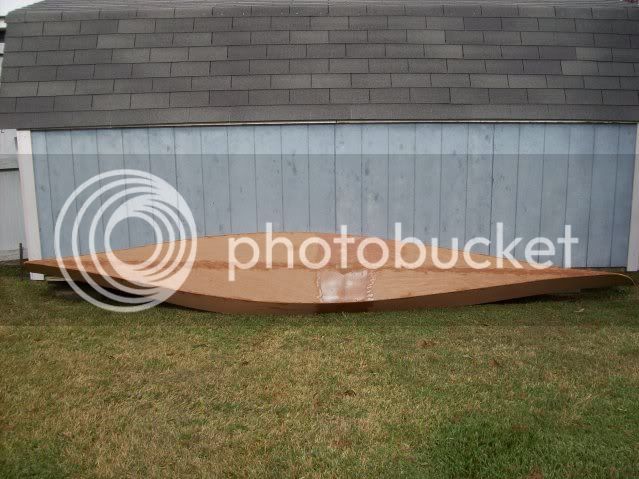I finished the filets on the outside. I did them in my cramped shop because of the cold, rainy weather. A little tight but doable.

Here's a shot of the bottom shape. First time I've seen it from more than 3 ft away.

I was really satisfied with the pinched in bow and stern shapes. She ought to have good speed and glide. I borrowed that idea from the Sea Wolf build on "How it's made".
Next step - inside fillets.
Joey

Here's a shot of the bottom shape. First time I've seen it from more than 3 ft away.

I was really satisfied with the pinched in bow and stern shapes. She ought to have good speed and glide. I borrowed that idea from the Sea Wolf build on "How it's made".
Next step - inside fillets.
Joey







